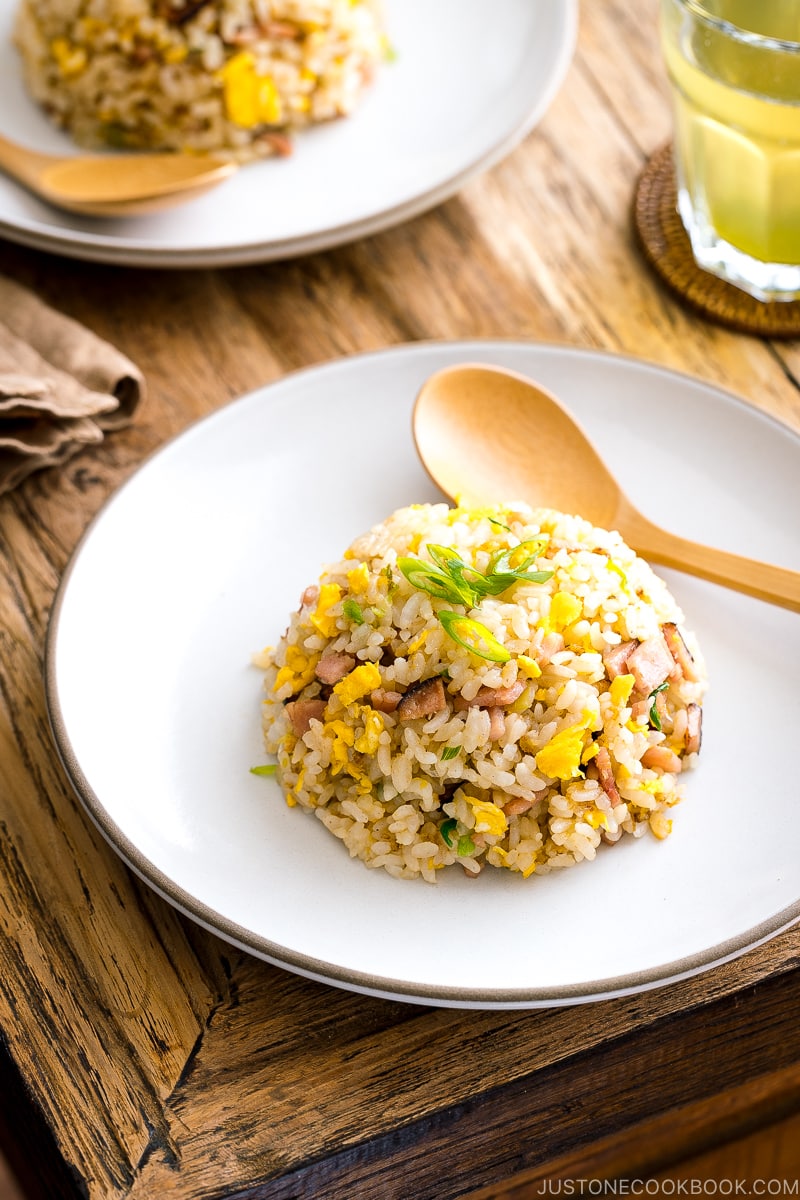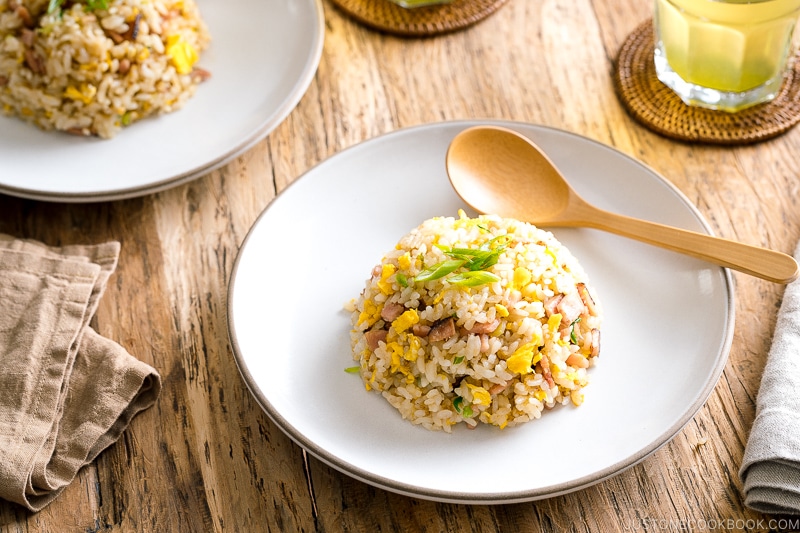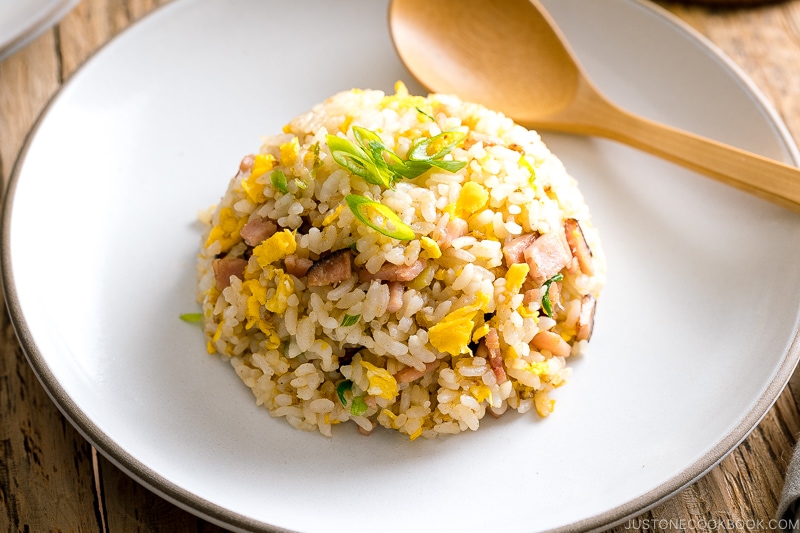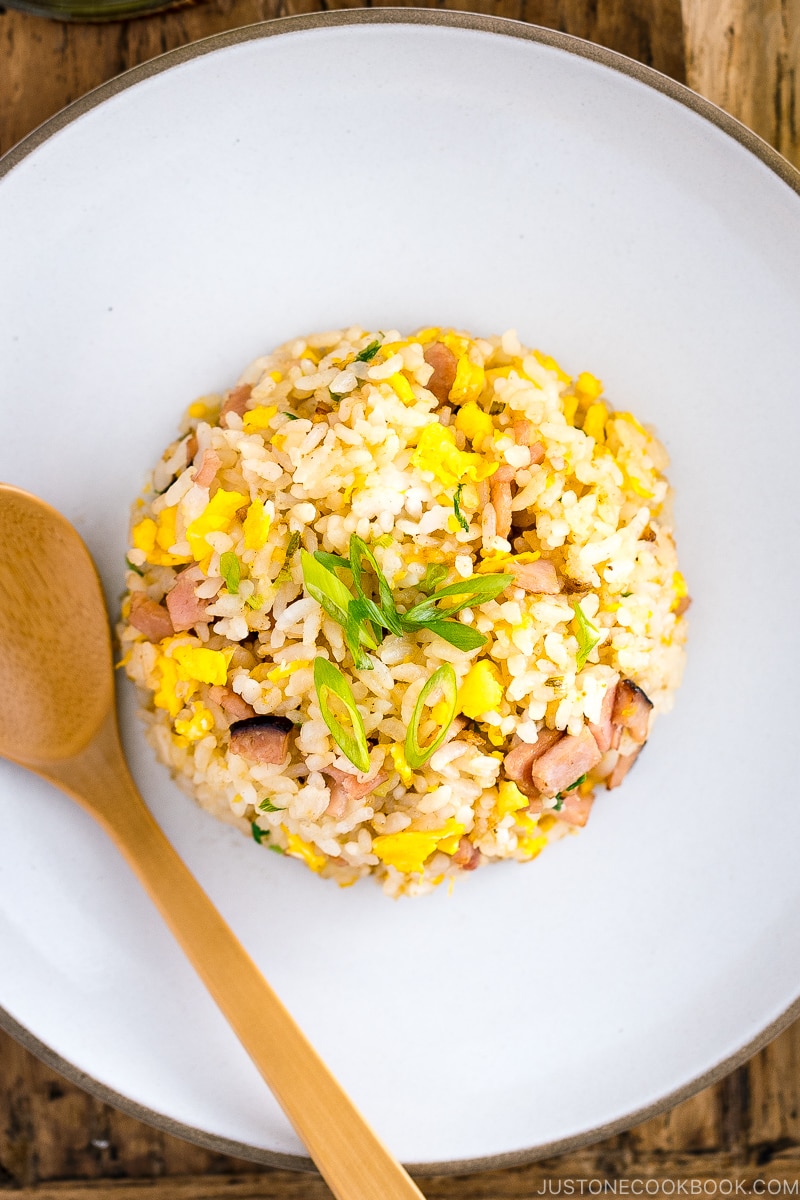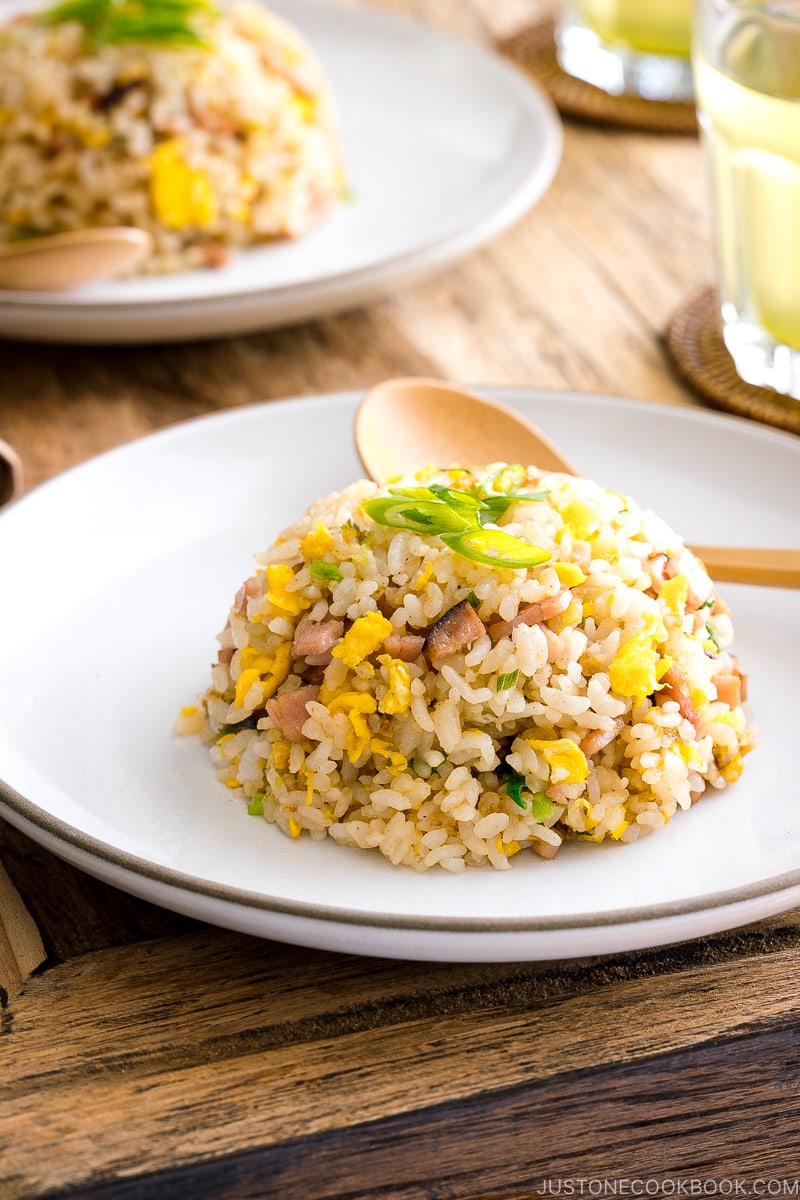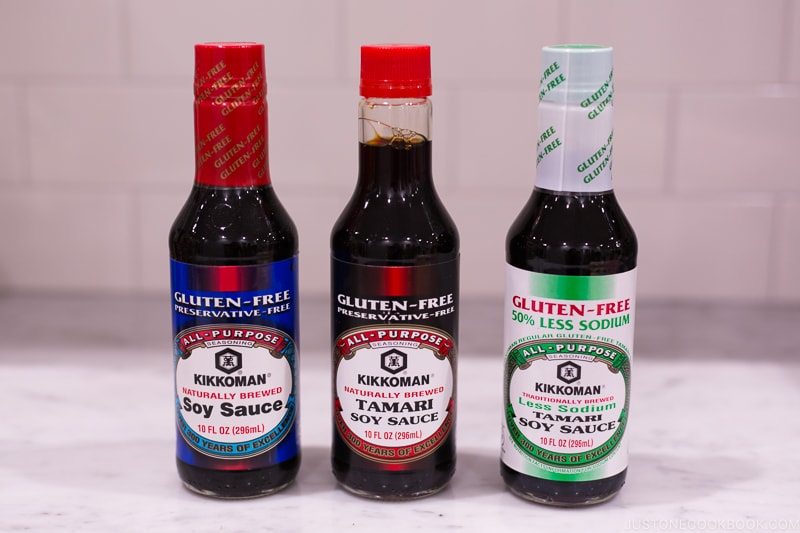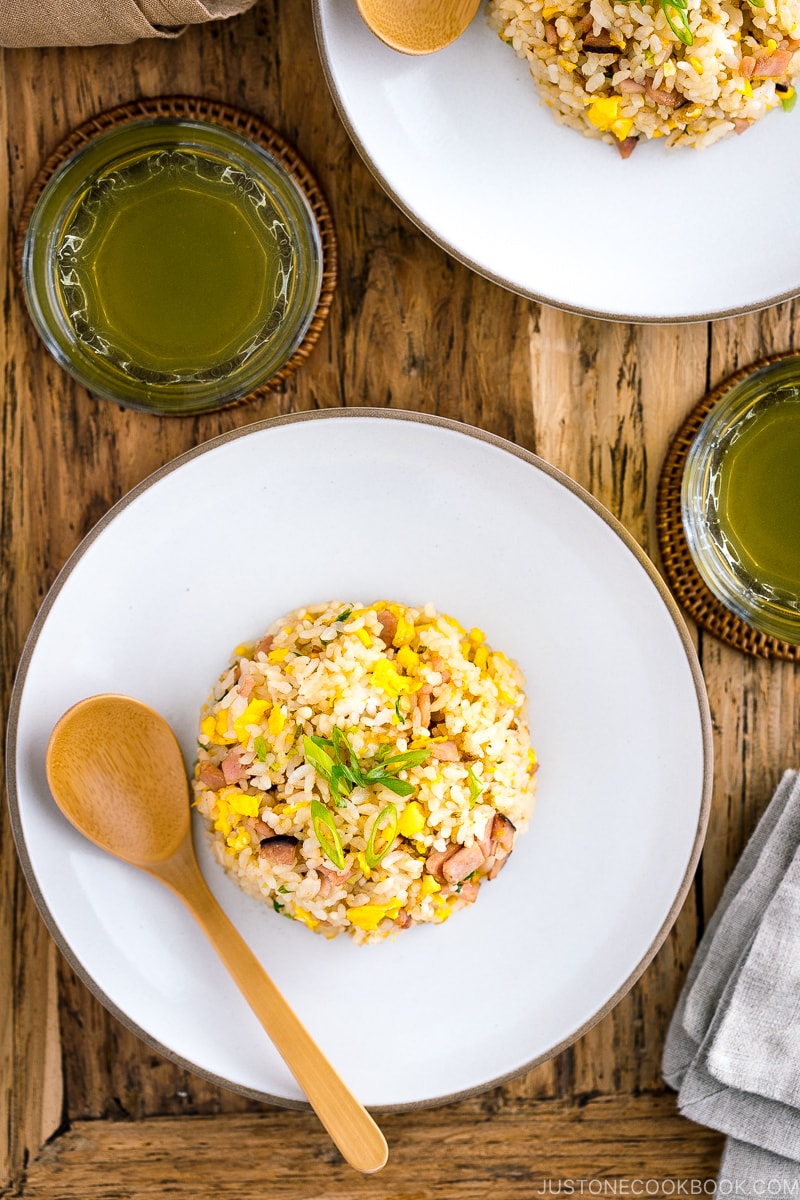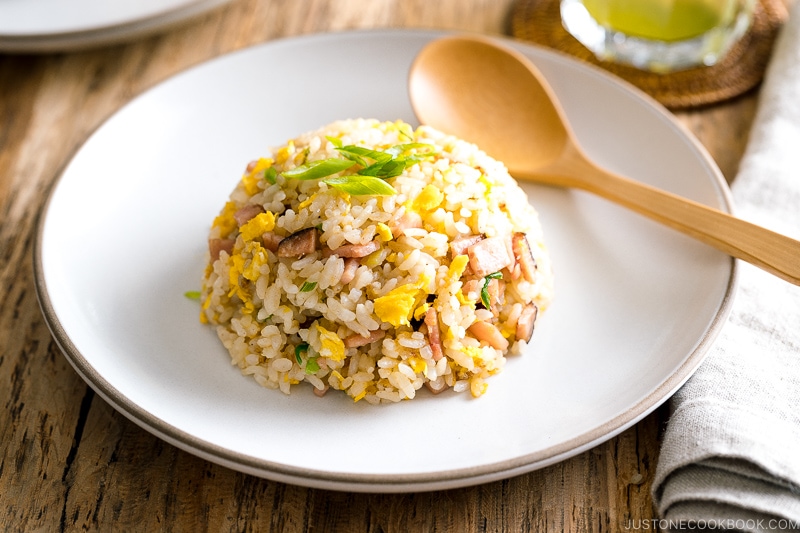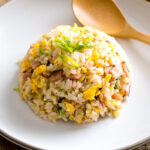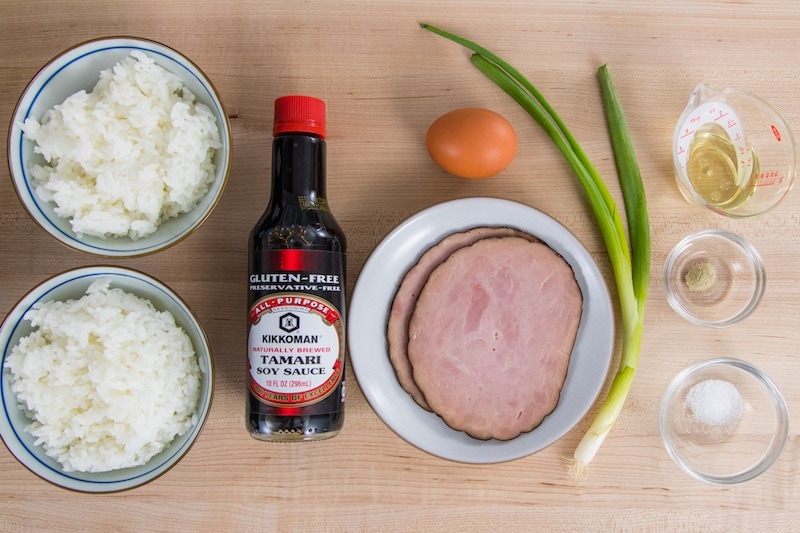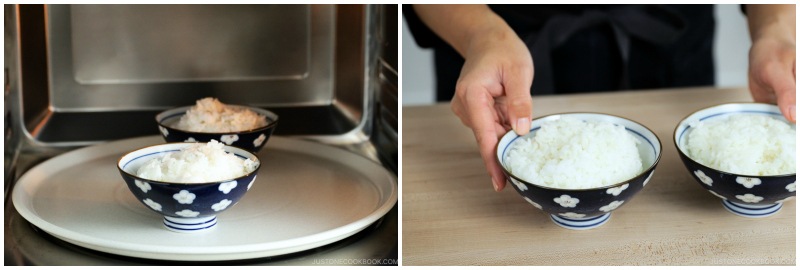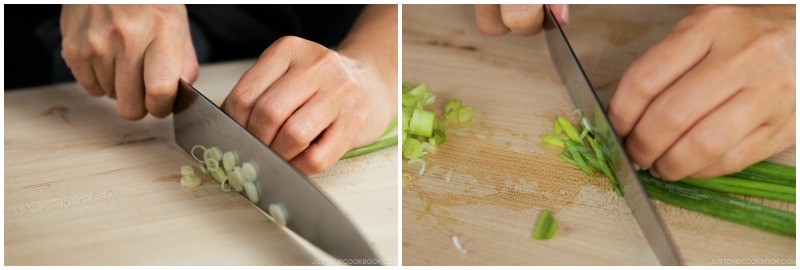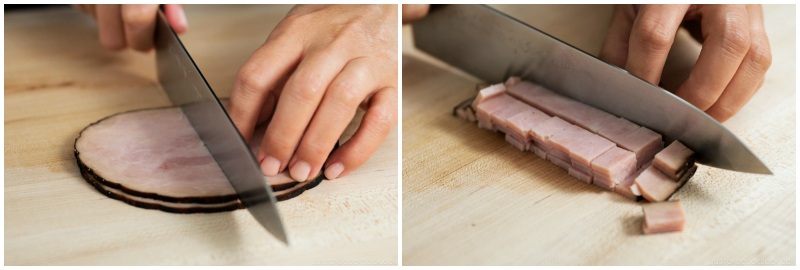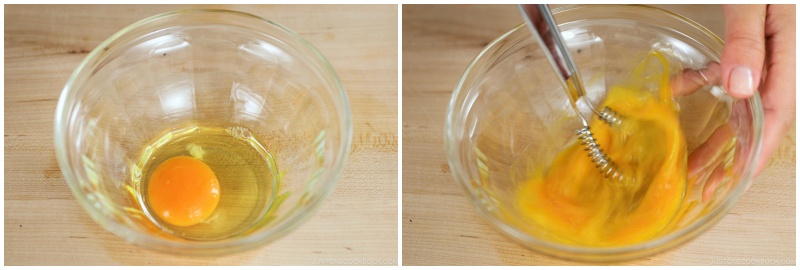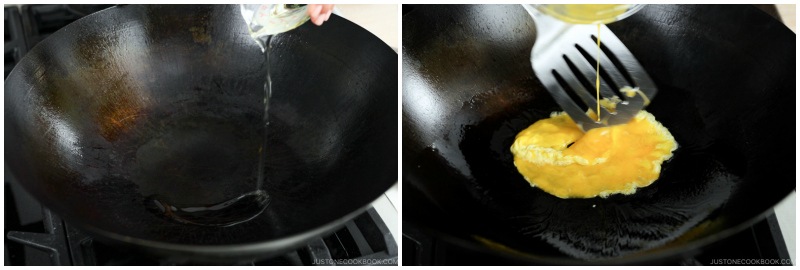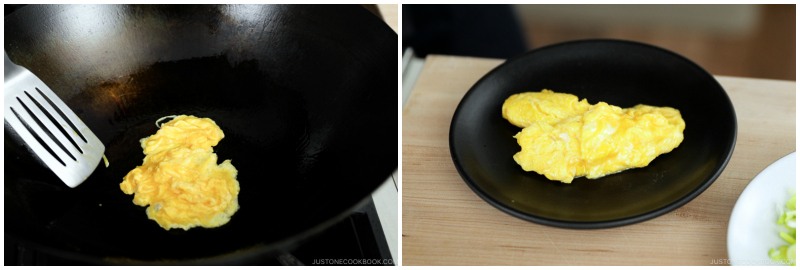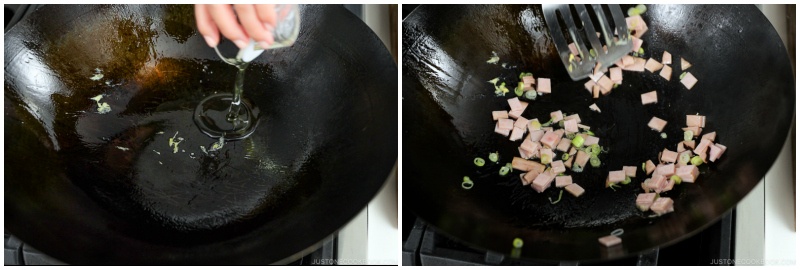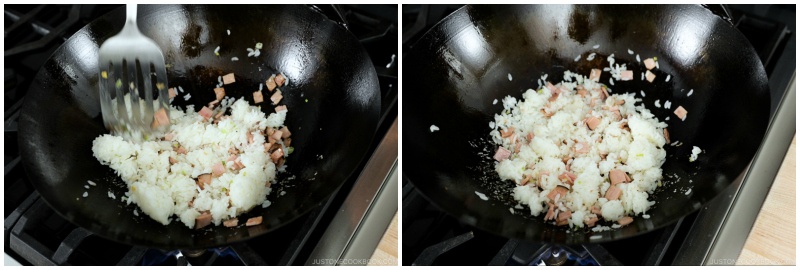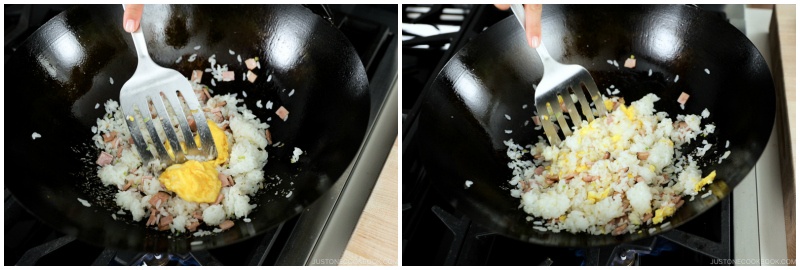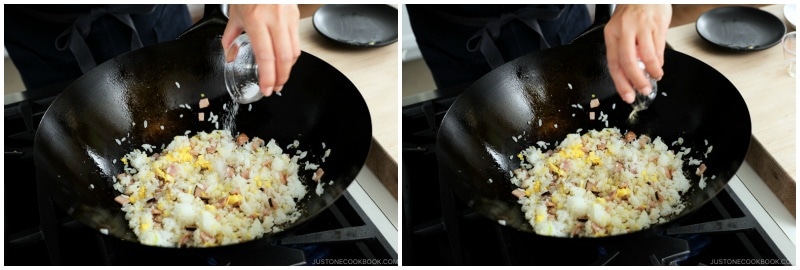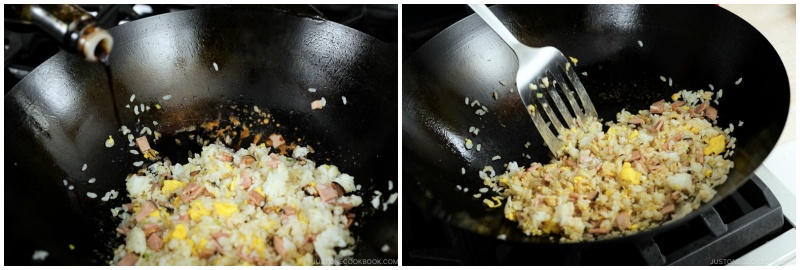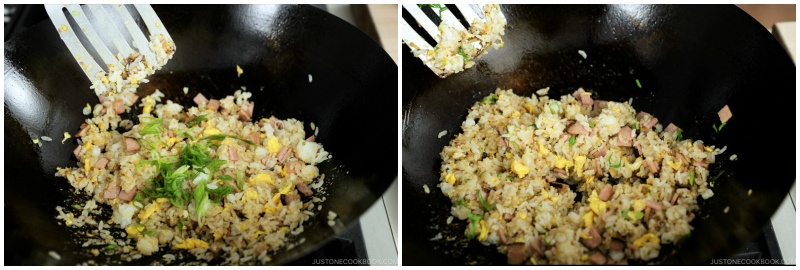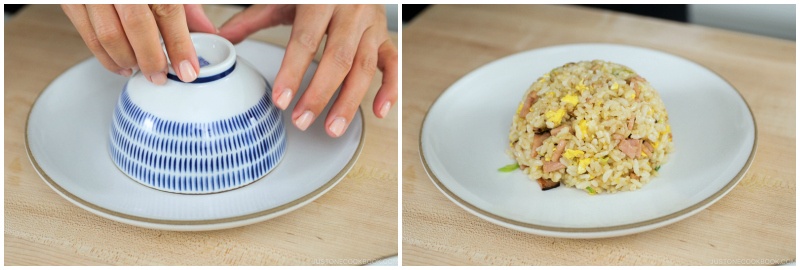Whenever I need to get lunch or dinner on the table fast, fried rice often comes to mind. With just a few well-chosen ingredients in the pantry and leftover rice, I’d be ready to cook up a satisfying meal in less than 20 minutes. So, when you are thinking of takeout to solve your dinner problem, remind yourself that it’s always a better idea to make fried rice at home. With this Japanese Fried Rice (Yakimeshi) recipe, you are guaranteed a delicious dinner that comes together quicker than you can say “takeout delivery.”
What is Japanese Fried Rice?
Almost every Asian country has its own version of fried rice, and so does Japan. It’s a clever way of repurposing leftover rice by frying it with veggies, eggs, or whatever meat/protein in a wok or pan. In Japan, we call Japanese fried rice chahan (チャーハン) or yakimeshi (焼き飯).
Chahan vs Yakimeshi
We commonly use both terms interchangeably and there are a few explanations out there, but I believe the actual differences might have gotten mixed up and blurred. Here are a few observations:
Chahan チャーハン
Chahan is the Japanese transliteration of the Chinese-style fried rice “chao fan” (炒饭). The name reflects the fact that fried rice originated in China; Chinese immigrants introduced it to Japan in the nineteenth century. Typically served at Japanese-Chinese restaurants in Japan. Eggs are cooked first before adding the rice. Seasoned mostly with salt. People in Tokyo region commonly use the term ”chahan” for fried rice.
Yakimeshi 焼き飯
Yakimeshi translates to “pan-fried rice” or “fried cooked rice,” just like Yakisoba or Yaki Udon. Eggs are cooked after adding the rice. Typically seasoned with soy sauce. In Osaka, fried rice seasoned with Worcestershire sauce is called Sauce Yakimeshi (ソース焼き飯). People in the Osaka region commonly use the term yakimeshi for fried rice.
Japanese Fried Rice vs Chinese Fried Rice
The main difference is that Japanese fried rice uses only Japanese short-grain rice, which is plump and sticky and has a higher moisture content, so it gives a slightly sticky, chewy, toothsome texture. Chinese fried rice or other Asian fried rice typically uses long-grain rice such as Jasmine rice, so you’ll find the texture tends to be on the drier side. I sometimes come across hibachi fried rice recipes online and I do want to point out that these are only available at hibachi or teppanyaki restaurants in the US, not in Japan. The concept of hibachi has somehow been misinterpreted and become mainstream for American-Japanese restaurants. I wrote more about it in my Teppanyaki post.
4 Tips to Make the Best Yakimeshi
1. Use Day-Old Rice or Let Cool Freshly Cooked Rice
Day-old, leftover rice that‘s dried out slightly in the refrigerator is the perfect vehicle for making fried rice because it is more firm and has no excess moisture. Just make sure to bring the leftover, cold rice to room temperature so it is easier for you to crumble and fry the rice in the wok. If you have to use freshly cooked rice, you’ll need to cook the rice earlier. Once cooked, spread the rice out in a baking sheet at the counter to cool it and let the moisture evaporate. Hot rice will easily turn into mush, so this helps to keep the rice intact and fluffy.
2. Less is More for the Case of Fried Rice
A good bowl of fried rice is about simplicity. When I first made fried rice in college, I tossed in way too many ingredients that my fried rice was more like a fried plate of a mish-mash. The rice had no space to move around and it ended up with big chunks of rice with overloaded vegetables and proteins. So less is best. Rice is the key ingredient; keep the rest minimal. Use a big wok or a pan with sufficient space to toss and turn the ingredients, and give each grain of rice enough contact with the heat. If you have too much food, your fried rice will stick together like a giant mess. Also, keep the veggies and meat/protein in smaller sizes so they will cook nicely together with the rice.
3. Make Fluffy Eggs First
Everyone has a different method to cook fried rice. Mine always starts with making fluffy eggs. Pour the beaten eggs into a pool of hot oil, and let the oil cook up the eggs first. When the bottom of the egg is set but the top is not yet fully cooked, take it out. Then, you can cook the other ingredients and rice, followed by the fluffy egg back into the wok or pan. It’s a fail-proof method for everyone.
4. Don’t Be Shy of Oil
If you want to achieve restaurant-quality fried rice, we’re going to need a good amount of oil. Fried rice should not taste oily, but it needs sufficient oil to circulate heat and flavor.
What is the Best Rice Cooker
Basic Seasonings for Yakimeshi
I use only three condiments to season my fried rice.
Salt White pepper powder Soy sauce
To make it gluten-free, I used Kikkoman®’s Gluten-Free Tamari Soy Sauce. Kikkoman®’s soy sauce is known for its appealing aroma and rich color that stimulate the appetite. Their soy sauce works great when you add heat to it. Fried rice cooked with Kikkoman®’s soy sauce adds a distinctly savory aroma, which lasts longer than other soy sauces. If you pack this fried rice in your children’s bento or your bring-to-work lunch box, you will get to enjoy the fried rice several hours later. If you do not have to make this recipe gluten-free, feel free to use regular soy sauce (I use Kikkoman® Organic Soy Sauce).
Common Ingredients for Japanese Fried Rice
For the most basic yakimeshi, we use Japanese short-grain rice, eggs, and ham, and garnish with green onion. However, fried rice is all about infinite possibilities! So you can use my basic yakimeshi recipe and customize it to your liking. I listed some common ingredients for Japanese fried rice below, but you can use whatever you have in the fridge. Keep your concoction simple. 3-4 ingredients will suffice.
Chashu pork belly (See Chashu Fried Rice) Chicken Chinese sausage Crab Edamame Eggs Green onion Green peas Ground pork Ham Iceberg lettuce (my favorite!) Kimchi (see Kimchi Fried Rice) Salmon (see Salmon Fried Rice) Shrimp (see Shrimp Fried Rice) Takana (see Pickled Mustard Greens Fried Rice (Takana Chahan))
Other Popular Japanese Rice Dishes
Japanese Garlic Fried Rice Japanese Fried Rice with Edamame, Tofu and Hijiki Seaweed Omurice (Japanese Omelette Rice) Oyakodon (Chicken and Egg Bowl)
Wish to learn more about Japanese cooking? Sign up for our free newsletter to receive cooking tips & recipe updates! And stay in touch with me on Facebook, Pinterest, YouTube, and Instagram. Editor’s Note: This post was originally published on November 16, 2018. The post has been updated with more information and republished in March 2022.
